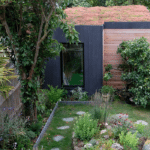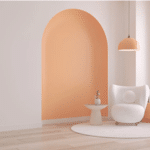
Focusing on health and wellness is now a part of our everyday lives. The desire for people to control their home’s environment is one of the lingering effects of the pandemic that potentially is here to stay. Rather than subsiding, sales of products in the health and wellness category continue to grow at peak rates. Marshal Cohen, the chief retail industry advisor for NPD, says, “Retail sales revenue from those categories, compared to 2019, have continued to grow by double-digits. This growth indicates that health and wellness is an enduring pandemic trend, which could provide opportunities for consumer spending.” Consumers who participated in the NPD survey shared their opinions.
- 52 percent of respondents think a clean home is a healthy home
- 31 percent feel keeping a healthy home is a priority
- 31 percent say cleaning my house reduces my stress/anxiety levels
- 58 percent have a regular laundry care routine
Opportunity to Grow a Niche Business
While some hardware stores and garden centers operated by independent retailers may include a home department, shifting the emphasis on the wellness benefits derived from certain products can give customers a fresh perspective. As with other niche categories, start by creating a store-within-a-store dedicated to products typically found in a hardware store. Now supplement this merchandise with additional items that are regional favorites or select brands not sold at big box stores to encourage customers to stay longer and buy more. Businesses can distinguish themselves from competitors by offering assortments that meet the demands of their customers on a practical and emotional level. Tapping into the trends in healthy homes gives retailers the flexibility to sell their current inventory creatively and build community by partnering with local vendors.
- Sixty-six percent of millennials are concerned about indoor air quality
- The EPA says a six-room house collects an average of 40 pounds of dust
- We spend 90 percent of our time indoors. Pollutants can be 2-5 times higher than outdoors
Portable Air Purifiers
Due to the rise in airborne diseases and pollution levels, the U.S. air purifier market is anticipated to grow 8.6 percent from 2020 to 2028. Several factors contributing to this growth are people becoming more health-conscious, improved standards of living, and higher disposable incomes. Sales reached
$2.4 billion in 2021. The dual crisis of the pandemic and smoke from the western wildfires made people more conscious of the air quality they breathe. Research indicates that portable air filters can improve air quality when consumers correctly follow the guidelines.
HEPA Vacuum Cleaners and Air Filters
Whether people live in small rural towns or large urban cities, those who want a clean home, have allergies, or have health concerns wish to rid their home of dust, animal dander, dust mites, and fleas.
HEPA (high-efficiency particulate air) vacuum cleaners are an advanced form of conventional cleaners that contain filters to trap 99.97% of all airborne particles larger than 0.001mm. Manufacturers have teamed up with the American Lung Association to commercialize products to improve air quality in residential environments. While HEPA air filters are significantly more expensive than standard versions, they are extremely popular with consumers. These pleated mechanical filters generated $2.4 billion and represented 40 percent of global sales.
Dehumidifiers. Using dehumidifiers to remove excess moisture from the air is beneficial for people with chronic conditions such as asthma and allergies since the appliance deters the proliferation of mold and dust mites. They are helpful in a humid climate or damp areas of the home. Sales in this category are expected to reach $6.3 billion by 2025, at an annual growth rate of 4.7 percent.
Pitchers with carbon filters. Pitchers, top-mounted and under-sink activated carbon filters can reduce lead levels, chlorine, and other drinking water contaminants. Companies such as PUR have created intensive campaigns to market their products. Consumers are familiar with the features, benefits, and costs of filtering the water they drink.
BPA-free plastic containers. There is a movement to eliminate BPA, a suspected health hazard, from plastics to prevent the chemical from leaching into foods and drinks. Many hardware stores currently sell BPA-free food containers in their housewares department, so promoting them as an alternative to conventional plastics can increase sales.
Combine Traditional Products with New Innovations
Manufacturers are introducing new healthy home products to the marketplace every day. Some are improved versions of existing products, such as low-VOC or no-VOC paints, filtered showerheads, or vent fans. Keep displays fresh and exciting by introducing your customers to items such as logs made of wood fiber and wax, organic lawn care items, or lime plaster. Building a healthy home niche is your chance to go all out with visual displays, end-caps, and signage to promote these thriving categories.




